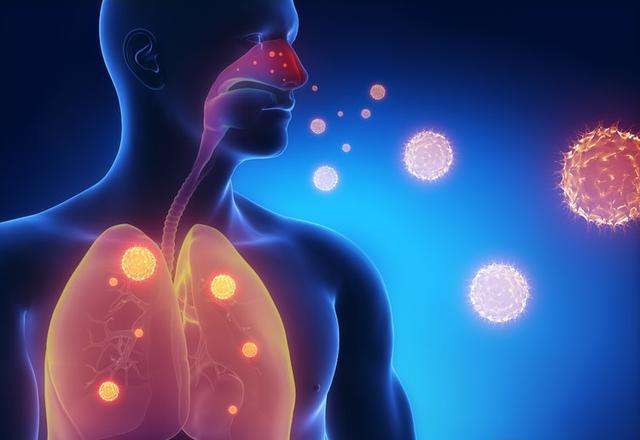human metapenu-movirus infection
Etiology
- Pulmonary viruses belong to the subfamily of pneumoviruses of the family Paramyxoviruses, which are single-stranded negative stranded RNA viruses.

Etiology
Pulmonary viruses belong to the subfamily of pneumoviruses of the family Paramyxoviruses, which are single-stranded negative stranded RNA viruses.
Transmission
Human metapenu-movirus are commonly acquired by contact with respiratory secretions
Symptoms
Most metapulmonary virus infections occur in childhood, with an incubation period of 4 to 6 days, and can cause a wide range of respiratory illnesses, from mild symptoms to severe cough, bronchiolitis, and pneumonia, often accompanied by hyperthermia and myalgia. There are indications that metapneumovirus is associated with nearly 10% of respiratory infections of unknown etiology, and that metapneumovirus can also cause nosocomial infections.
Diagnostic Test
RT-PCR detection of viral nucleic acid is the ideal means of determining metapneumovirus infection.
Treatment
Symptomatic treatment
Treatment of adenovirus infections is symptomatic and supportive.
Prevention
Contact precautions (eg, hand washing, gloves, isolation) are important, particularly in hospitals.
Vaccine
Not available
Prognosis
In healthy adults and older children, illness is usually mild and may be inapparent or manifested only as an afebrile common cold. However, severe disease may develop in the following:
- Patients who are < 6 months, elderly, or immunocompromised
- Patients who have underlying cardiopulmonary or neuromuscular disorders
Information Update
Page last reviewed: September 30, 2022
source: Centers for Disease Control and Prevention(https://www.cdc.gov/index.htm), Chinese Center for Disease Control and Prevention(https://www.chinacdc.cn/), World Health Organization(https://www.who.int//), Diagnosis and Treatment Protocol for COVID-19 Patients (Tentative 8th Edition) (Updated: 2020-09-07|en.nhc.gov.cn)